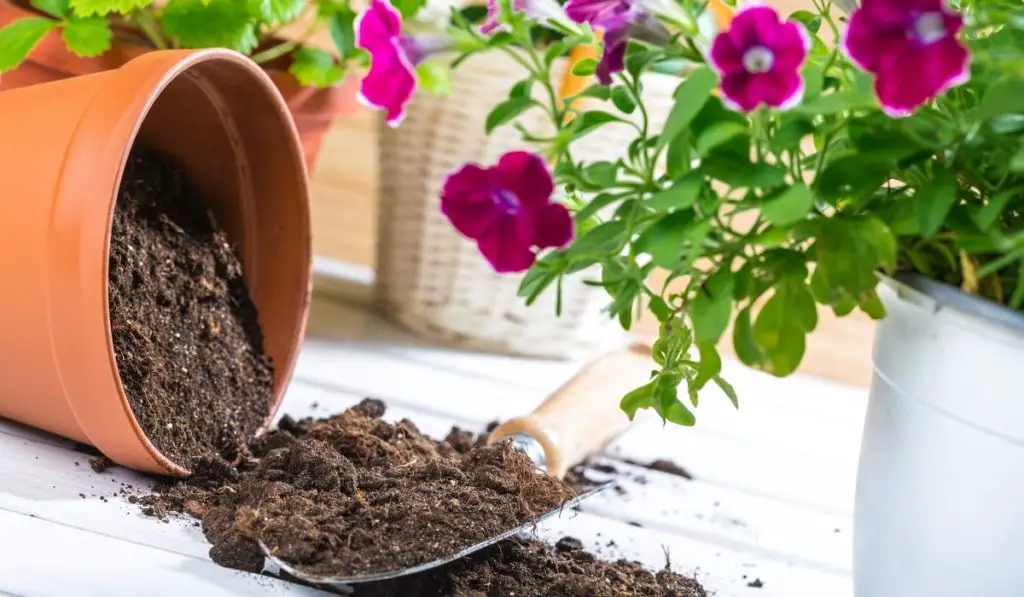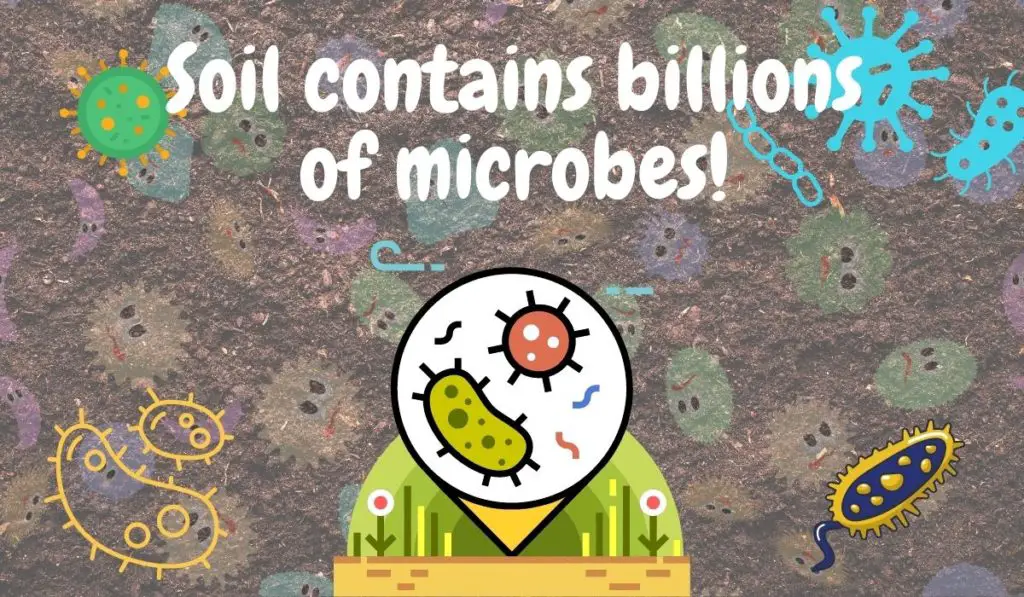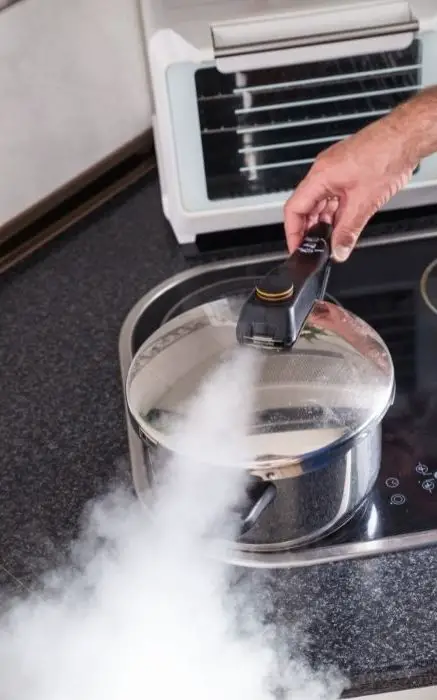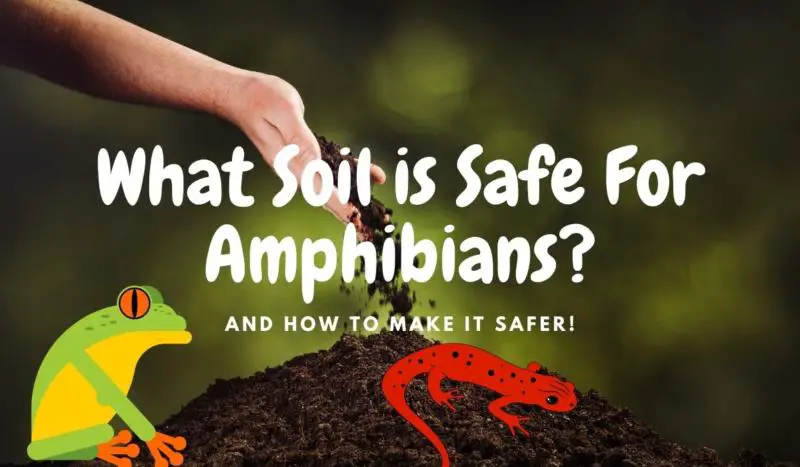When you want to add plants to your amphibian’s tank, it’s important that you choose a safe type of soil. There are many different soil options available and many amphibian owners aren’t sure which one is right for their pet. On this page, we’re going to discuss what soil is safe for amphibians.
The safest soil for replies and amphibians is organic soil without any chemicals added. Other safe choices include coco fiber, peat moss, sphagnum moss, or even organic garden soil. The best way to make sure the soil is safe for your amphibian is to sterilize it yourself at high temperatures.
Are you curious which soil you should be using in your terrarium? There are many soils to choose from, and we’re going to go over which ones you should and shouldn’t be using. Keep reading to find out more.
Contents
Is potting soil safe for toads?
While reptiles and amphibians share some similarities, such as laying eggs and having scaly skin, there are also some key differences between the two classes of animals.
For example, amphibians are typically characterized by their moist, permeable skin and their ability to breathe through their skin, while reptiles have dry, scaly skin and breathe using lungs.
Therefore amphibians tend to be more sensitive to chemicals in soil compared to reptiles.
If you have one or more pet toads, potting soil is an excellent choice for your vivarium. When you have a toad tank, you should always line the bottom of the tank with a substrate material for them.
Putting down 3 to 4 inches of potting soil is safe for the toads and helps make the tank more comfortable for the toad.
Potting soil is a good choice for a toad’s tank because it can absorb their waste and it’s also easy for the toads to bury it.
When choosing a potting soil for your toad’s tank, always make sure it is organic. If potting soil is listed as organic, always review the ingredients before trusting that it’s fully organic.

Don’t buy any potting soil with “organic compounds made from inorganic materials” on the label, as it may still come from fields where pesticides, fungicides or herbicides have been used.
While potting soil can be a safe substrate for a toad’s tank, some substrates that are not safe for a toad’s tank are sand and gravel – despite them being organic!
These relatively large-grained substrates may present a hazard due to the chance of the toad choking on the tiny rocks, so I don’t generally recommend using sand and gravel if it comes directly in contact with your toad.
However, it is recommended to place a layer of gravel underneath a screen below the potting soil. This will help with drainage so extra water and moisture in the tank don’t cause the potting soil to go soggy.
Is organic potting soil safe for reptiles?
Organic potting soil can be safe for some reptiles, but it depends on the type of soil and the species of reptile you are keeping.
It is important to avoid any potting soil that contains additives such as fertilizers, pesticides, or other chemicals that could be harmful to your reptile. Always check the ingredients list and make sure it is labeled as organic and free of any harmful additives.
In addition, some organic potting soils may contain ingredients that could be potentially harmful to certain species of reptiles, such as those that require a specific type of substrate or have sensitive respiratory systems.
For example, certain types of reptiles may be sensitive to coconut coir, which is a common ingredient in some organic potting soils.
Before using any type of potting soil for your reptile’s enclosure, it is important to do research on the specific needs of your reptile and consult with a veterinarian or experienced reptile keeper to ensure that the substrate is appropriate and safe for your pet.
Can I use potting soil for frogs?
You can use potting soil in the frog’s tank if it is fully organic and properly sanitized before use.
This can usually be found at a garden store, rather than a department store because most department stores with a garden section sell soil that is only partially or not organic.
One problem a lot of frog owners notice about 100 % organic potting soil is that it can be very pricey, and it usually costs more than the owner wanted to spend.
It is recommended to mix organic potting soil with other organic matter, such as coconut fiber, to save money, bring in some aeration, and to create a safe living environment for your frog.
When mixing the two soils together, it’s recommended to mix 40 % organic potting soil with 60 % coconut fiber (or other material).
What substrate types are safe for amphibians?
There are many soil choices that are safe for amphibians, however, they need to be 100 % organic. Potting soil is a good choice if it is organic, but real organic potting soil can be quite expensive. If you’re looking for a more affordable organic soil alternative, you should try any of the following options:
1. Coco fiber for amphibian tanks
Coco fiber is the most common choice for amphibian tanks and it’s often fully organic. This substrate is made up of fibers from a coconut husk.
The fibers are ground up into a fine substance that’s like peat moss. It’s a very safe substrate for amphibian tanks and easy to grow plants in. It is also great for mixing with other organic soils when creating a comfortable living environment.
2. Sphagnum moss for amphibian tanks
Sphagnum moss is commonly found growing on bogs in moist environments. Once this moss starts to decay, it turns into a soil additive. This is one of the best soils for creating a more humid environment for the amphibians. It is recommended to place some underneath of their shelters, so they feel more comfortable. However, this can also be used as the main substrate in the amphibian tank.
You may already know of this moss as peat moss. There are nearly 380 different species of moss that can turn into peat moss. Peat moss is decayed moss, which is the state any moss needs to be in to be an appropriate soil for an amphibian tank. It also has a low pH, so it won’t upset your amphibian’s living environment.
3. Bark for amphibian tanks
Some amphibian owners like to use bark in the tank because it makes a good surface for amphibians to rest on and it has a very natural look. The bark is also great for retaining moisture in the tank. However, the bark is a better choice for amphibians like snakes and tortoises.
4. Other substrates
Cypress mulch, sand, sand, gravel and rocks are also substrates that may be used for amphibians. While sand and rock based substrates are ideal in terms of their ease of sterilization (they don’t burn or melt when heated!), there is the risk that your pet reptile or amphibian swallows the rocks. This may, just as synthetic materials used in vivariums, lead to problems with digestion and in worst case choking of the animal.
Soil contains microorganisms that may harm your amphibians
Having organic substrate for your terrarium is a great start, but it is not enough to ensure that it is completely safe for our amphibian or reptile friends.
This is because microorganisms still thrive in organic soil and may even be more present in organic soil types!

Microorganisms that may be harmful to your amphibian or reptile are mainly bacterial and fungal pathogens but may also include viruses.
One of them, a pathogenic fungus, is the Batrachochytrium dendrobatidis which is part of the Chytridiomycota division of fungi.
This group of fungi are also known as chytrids and they are largely responsible for the decline amphibians worldwide.
This fungus and its spores are widely present in the environment, including soil, in warmer regions of the world (60-80°F) and could potentially be lurking in the soil you are planning to use for your amphibians!
However, as other fungi, chytrids die at higher temperatures, so you may follow the procedures described here and summarized below to sterilize soil or other substrates for your amphibians.
How do you sterilize soil for amphibians?
So, there are a few ways to make sure the soil you are using in your terrarium is free from fungi and other microorganisms.
The procedures are the same as for sanitizing any other object you would bring into your pet enclosure from the outside. I have written a more thorough article about the subject of sterilizing rocks for reptiles here.
The best way is to put it in a pressure cooker as a slurry with water for at least 15 min. Remember to always include water when you use a pressure cooker, otherwise, the soil will burn.

This will subject the soil to temperatures of up to 250 °F, which kills all fungal and bacterial spores that normal boiling water does not get rid of!
Afterwards, you may dry the soil slightly in the oven at a slightly lower temperature (around 200 °F), but make sure it does not dry out completely as a slight humidity is preferable – especially for amphibians!
Another option is using a microwave for sterilizing smaller portions at a time. Here, you need to make sure the heat is well distributed, so you will have to mix the soil a few times during the process.
I usually put the soil in a bowl covered with a plate or another flat object as a lid. This will ensure that the steam stays in to improve the heating.
I then set the microwave at a medium setting. I use the medium setting along with a longer time duration, because it distributes the heat more evenly in the sail, and therefore ensures proper sterilization.
However, with the microwave, it is not easy to monitor the average temperature of the soil, so there is no guarantee that everything has been treated throughout.
Therefore, I would recommend the pressure cooker if you live in warmer areas with a risk of environmental chytrids.
The protocols shown here are relevant to soil only and for other materials like wood or rocks, you will have to go by the other means of cleaning described in this post about using wood safety with for reptiles and this post about how to sterilize rocks for vivariums.
Verdict
Finding a safe substrate for your amphibian is easy, but making sure that it is 100% safe requires some effort. In this article, I have suggested a few different types of substrates that you can use in your amphibian enclosure.
In conclusion, make sure:
- That your soil is suitable for amphibians.
- That the soil does not contain any additive chemicals that may harm your amphibian.
- That your soil is free from potentially harmful microbes – especially pathogenic fungus.
- To take steps to sterilize your soil before use if in doubt, especially if you life in warmer regions.




